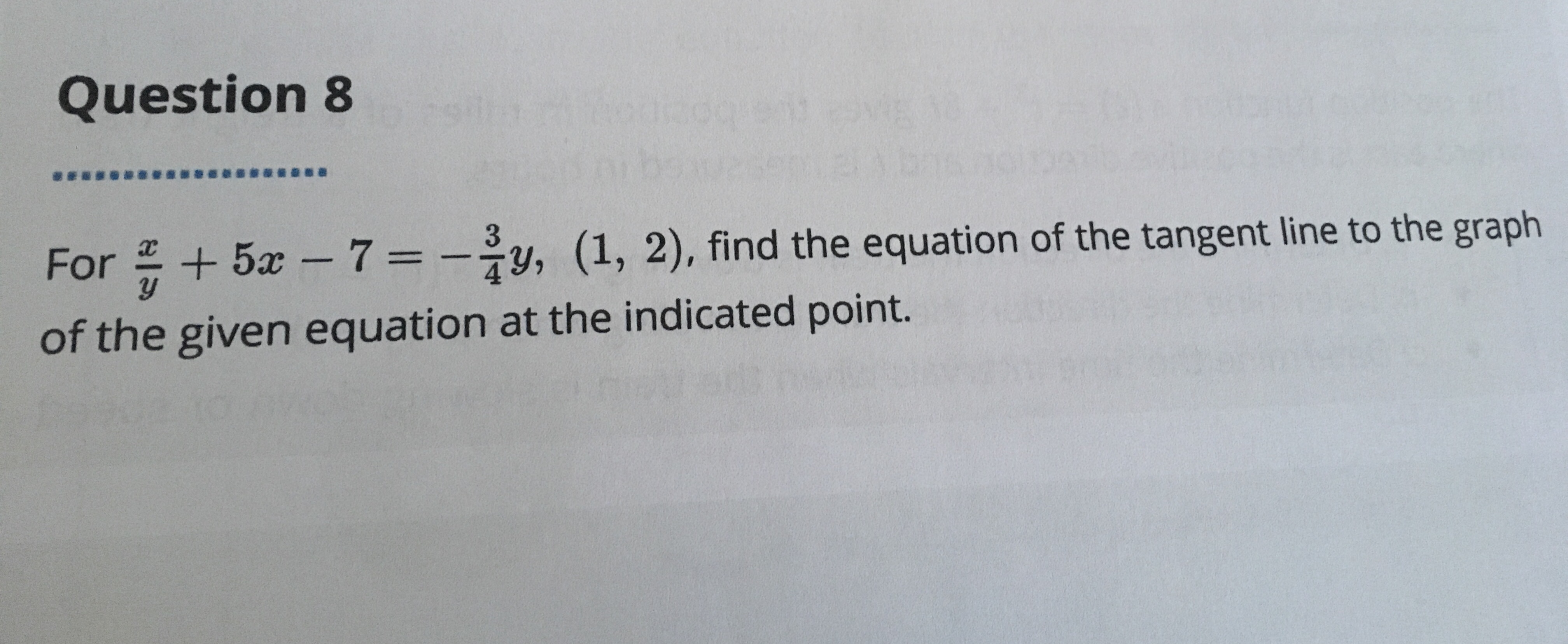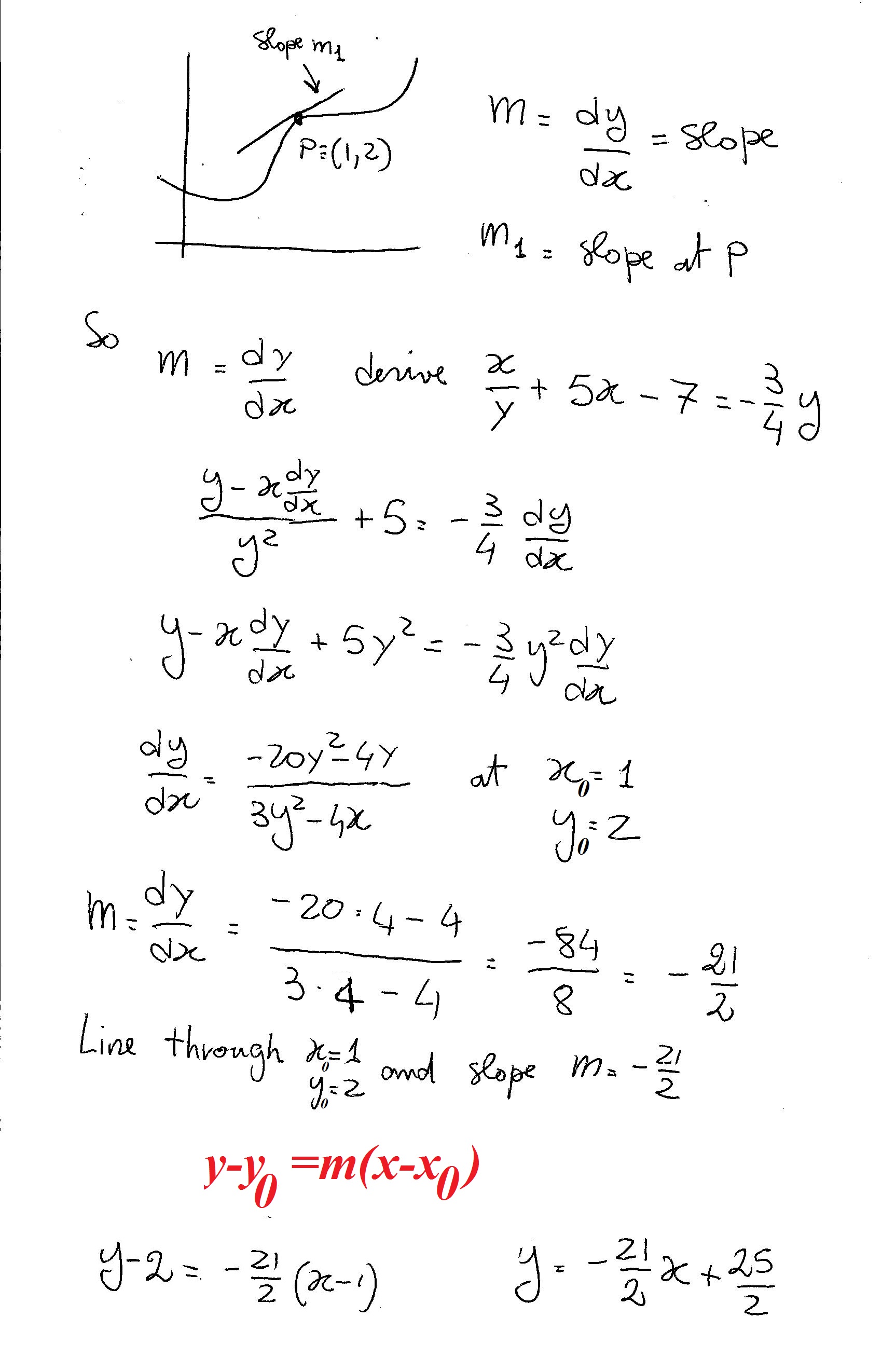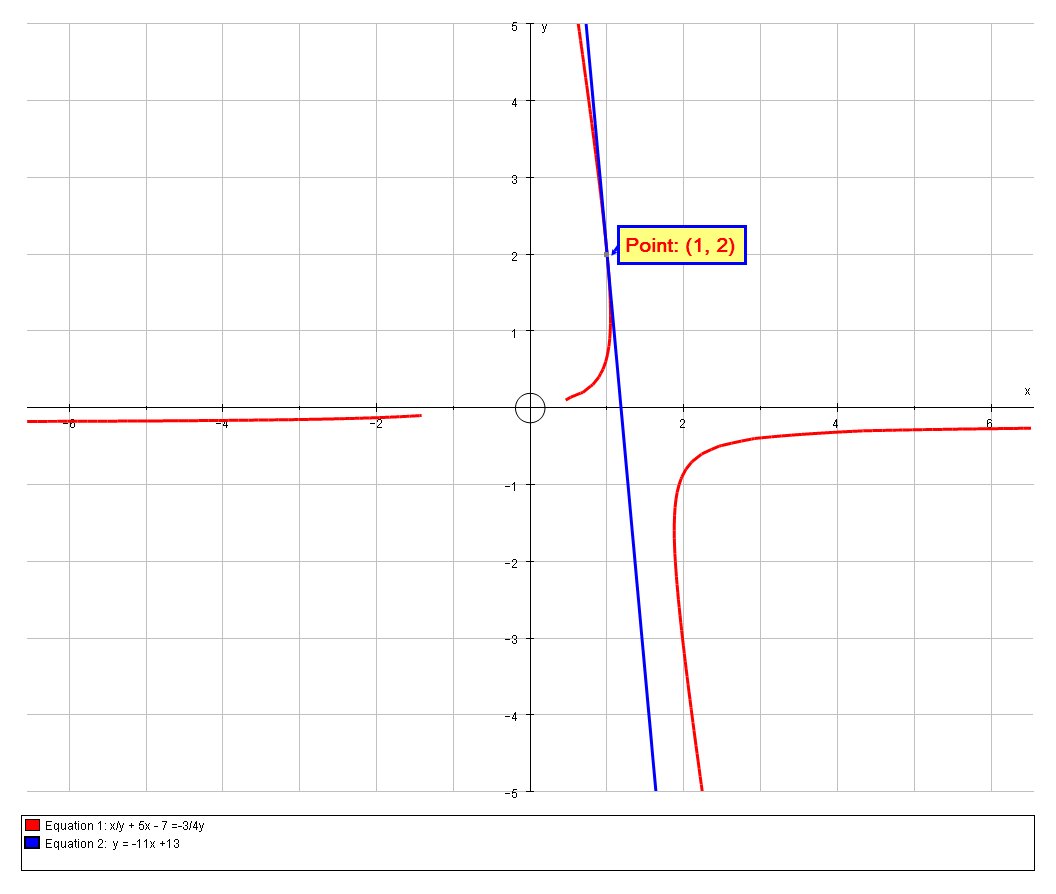What is the correct way to solve this? Explain step by step.

2 Answers
I got:
Explanation:
Ok, this one is a bit steep...
First you know that the derivative

# y = -11x +13 #
Explanation:
The gradient of the tangent to a curve at any particular point is given by the derivative of the curve at that point. (If needed, then the normal is perpendicular to the tangent so the product of their gradients is
Here we do not have an explicit equation of the form
# x/y + 5x - 7 =-3/4y #
So we must differentiate implicitly, in conjunction with the quotient rule, giving:
# ((y)(1) - (x)(y'))/(y^2) + 5 = -3/4y' #
# :. (y - xy')/(y^2) + 5 = -3/4y' #
Consequently we do not have an explicit expression for
# (2 - y')/(4) + 5 = -3/4y' #
# :. 2 - y' + 20 = -3y' #
# :.2y' = -22 => y'=-11 # at#(1,2)#
So the tangent passes through
# y - 2 = -11(x-1) #
# :. y - 2 = -11x+11 #
# :. y = -11x +13 #
We can verify this graphically:



